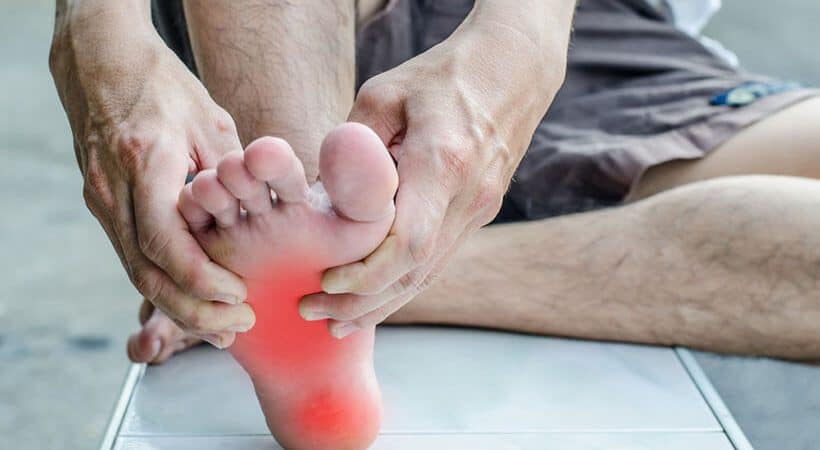How can Peripheral Neuropathy affect your body?
The nervous system is the most complex of the body’s systems. Neural processes involve impulse-conducting cells that send signals between the brain, spinal column, and nerves for sensory and motor communication between brain and body.
Nerve dysfunction can be caused by many factors, but is most commonly caused by disease or injury.
When motor nerves are damaged, the result is loss of muscle strength, coordination and control.
When sensory nerves are damaged, the result is numbness, tingling, pain, itching, crawling, and pins-and-needles sensations.
The most common form of nerve dysfunction is peripheral neuropathy. Pain and paresthesia (abnormal sensations) appear at the ends of long nerves, most often in the lower legs and feet. Usually it begins with sensory symptoms, but can progress to motor symptoms, such as weakness.
The symptoms can worsen, and ascend up the leg slowly over time.
Though there are many causes of peripheral neuropathy, some of the more common causes include: diabetic neuropathy, inflammatory diseases (Guillain-Barre syndrome, lupus, Lyme disease, multiple sclerosis), injury to the nerves, and effects of chemotherapy (chemotherapy-induced peripheral neuropathy.)
Neuropathy may be chronic (long-term) or acute (sudden onset with slow resolution). There are an estimated 20 million people in the U.S. who suffer from it. Signs and symptoms of peripheral neuropathy might include:
• Gradual onset of numbness, prickling or tingling in your feet or hands, which can spread upward into your legs and arms
• Sharp, jabbing, throbbing, freezing or burning pain
• Extreme sensitivity to touch
• Lack of coordination and falling
• Muscle weakness or paralysis if motor nerves are affected
What can you do about it?
People who suffer with neuropathy feel it 24/7. It affects their ability to enjoy life and do simple things, such as walk barefoot through the grass, play golf, or sit and have a conversation without the pain taking all their attention.
This kind of pain drives people who suffer with neuropathy to search for answers, but when they speak to their doctor usually the only answer they find is to take drugs that have serious side effects, cause memory loss, and make them feel like they’re in a fog.
The nerve pain felt is due to a malfunction in the normal neural signature. Many people are told that their nerves are dying, yet tests show that everything is normal and the pain can’t be explained.
Many of my patients who suffer from peripheral neuropathy have found relief from their symptoms through Calmare® Pain Therapy Treatment.
The Calmare® Pain Therapy Device is the world’s only non-invasive and non-addictive modality that can successfully treat chronic, neuropathic pain. The device uses a biophysical rather than a biochemical approach, avoiding the adverse side effects and addictive properties linked to narcotic pain killers.
A ‘no-pain’ message is transmitted to the dysfunctional nerve cells via disposable surface electrodes applied to the skin in the region of pain.
The perception of pain is cancelled when the ‘no-pain’ message replaces that of pain, by using the same pathway through the surface electrodes in a non-invasive way. Essentially, the neural signature is re-written.
The brain is no longer receiving the dysfunctional signal. Regardless of intensity, the pain can be completely eliminated for immediate relief.
I’ve been using Calmare in my clinic for years, and have had tremendous success in treating patients with peripheral neuropathy. By connecting electrodes from the Calmare machine to the body near areas of pain, a responsive patient becomes unable to feel the original symptoms and over the course of treatment, the brain begins to normalize the neural signature from that of pain to that of ‘no pain.’
A successful response to treatment is a significant reduction or elimination of pain over a series of successive daily treatments.
The Calmare device has been used to successfully treat over 4,000 patients worldwide, where it has been shown to be effective in treating neuropathic and oncologic pain.
Conditions treated include:
• Chemotherapy-induced peripheral neuropathy (CIPN)
• Phantom limb syndrome
• Sciatica
• Post-surgical neuropathic pain
• Low back pain
• Neck pain
• Reflex sympathetic dystrophy
• Postherpetic neuralgia (PHN)
Call us today to schedule your appointment- we want to get rid of your pain.



Recent Comments